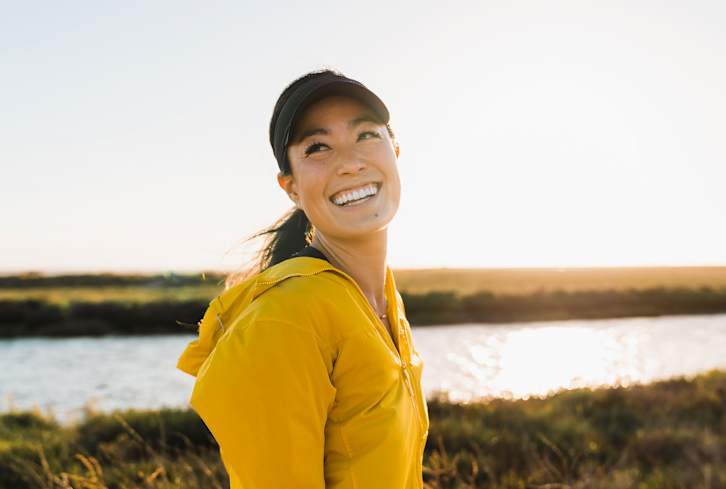Advertisement
How To Properly Perform Locust Pose To Stretch & Strengthen The Body


If you're looking for a yoga posture that can help both stretch and strengthen the body, look no further than locust pose, or salabhasana in Sanskrit. All you need is yourself and your mat, plus it's modifiable to suit any skill level. Here's how to do it, as demonstrated by yoga instructor Emily Chen, plus tips, modifications, and benefits.
How to do locust pose, salabhasana
- Start on the mat, lying on your stomach with your arms stretched out in front of you.
- With your hips pressing into the mat, point your toes and engage the legs, then lift up your feet slightly.
- As you lift your feet, simultaneously lift your arms up in front of you. Keep everything engaged.
- Hold here for 8 to 10 breaths, or as long as you need, then gently lower back down.
Tips & modifications
- You can hold a yoga block between your hands to help keep the arms engaged.
- If this posture is uncomfortable on the hips, try putting a folded blanket underneath them.
- You can hold the arms out straight behind you, or position them directly underneath your belly with the palms facing down.
- Avoid straining the neck upward, looking for more of a neutral, long neck.
- Avoid this posture if you're pregnant.
- If you're working up to the full posture, consider lifting the legs or upper body one at a time. You can also work on lifting one leg at a time, holding for 20 to 30 seconds, and switching legs.
- Imagine your hands and feet were being pulled in opposite directions, creating maximum length through the body.
What are the benefits?
As a yoga instructor, I can't recommend locust pose enough—since there are so many benefits. It's tremendous for stretching out the front side of the body, while also strengthening a number of different muscles. Primarily, this posture works the glute and leg muscles, as well as the entire back and shoulders.
This gentle backbend helps to open up the chest (aka the heart center, or heart chakra) and strengthens the spine, as you stimulate all of your abdominal organs.
And as Chen notes, this posture can even relieve neck tension and improve posture because it helps to stretch and strengthen the stabilizing, supporting muscles in those areas.
The bottom line is, whether you want to strengthen the back of your body, open up the front, or simply relieve some neck stiffness, this is a posture you don't want to skip.
Watch Next
Enjoy some of our favorite clips from classes
Enjoy some of our favorite clips from classes
What Is Meditation?
Mindfulness/Spirituality | Light Watkins
Box Breathing
Mindfulness/Spirituality | Gwen Dittmar
What Breathwork Can Address
Mindfulness/Spirituality | Gwen Dittmar
The 8 Limbs of Yoga - What is Asana?
Yoga | Caley Alyssa
Two Standing Postures to Open Up Tight Hips
Yoga | Caley Alyssa
How Plants Can Optimize Athletic Performance
Nutrition | Rich Roll
What to Eat Before a Workout
Nutrition | Rich Roll
How Ayurveda Helps Us Navigate Modern Life
Nutrition | Sahara Rose
Messages About Love & Relationships
Love & Relationships | Esther Perel
Love Languages
Love & Relationships | Esther Perel
What Is Meditation?
Box Breathing
What Breathwork Can Address
The 8 Limbs of Yoga - What is Asana?
Two Standing Postures to Open Up Tight Hips
How Plants Can Optimize Athletic Performance
What to Eat Before a Workout
How Ayurveda Helps Us Navigate Modern Life
Messages About Love & Relationships
Love Languages
Advertisement

Yes, There's A Longevity Vitamin (& People Over 40 Need To Prioritize It)
Molly Knudsen, M.S., RDN

Yes, There's A Longevity Vitamin (& People Over 40 Need To Prioritize It)
Molly Knudsen, M.S., RDN

Yes, There's A Longevity Vitamin (& People Over 40 Need To Prioritize It)
Molly Knudsen, M.S., RDN

Yes, There's A Longevity Vitamin (& People Over 40 Need To Prioritize It)
Molly Knudsen, M.S., RDN









